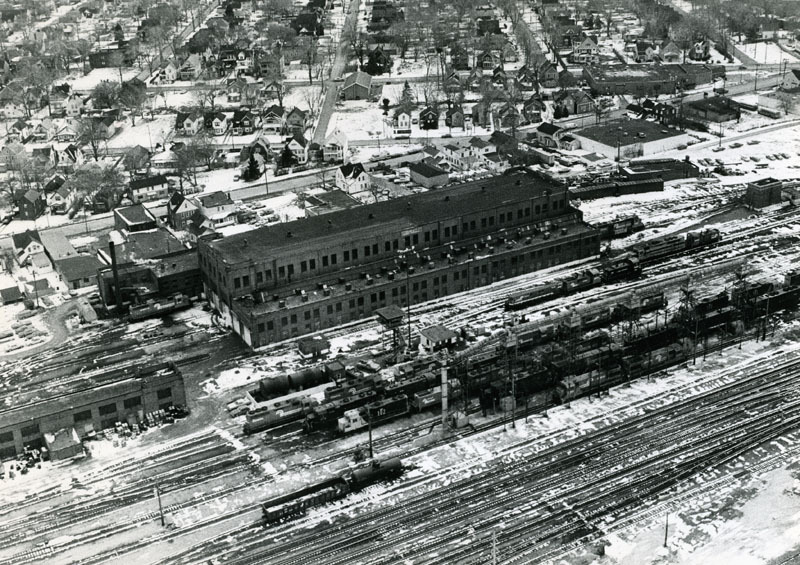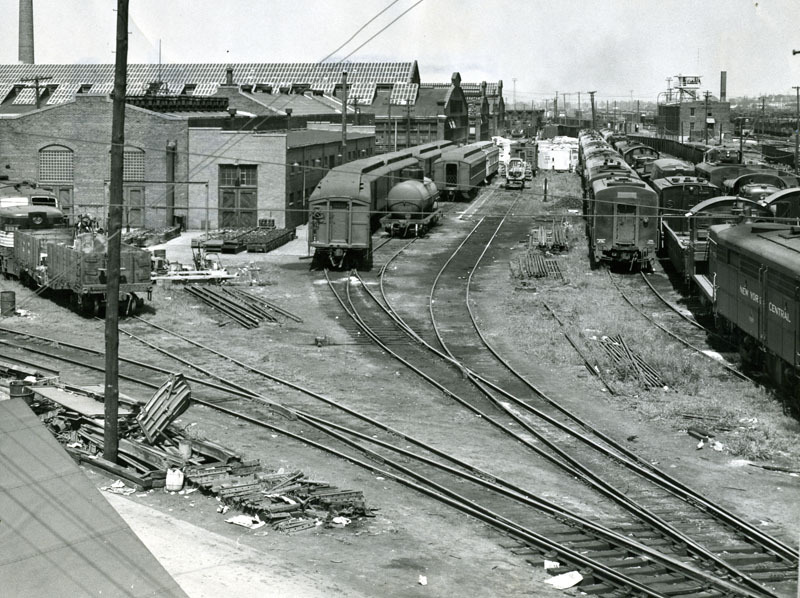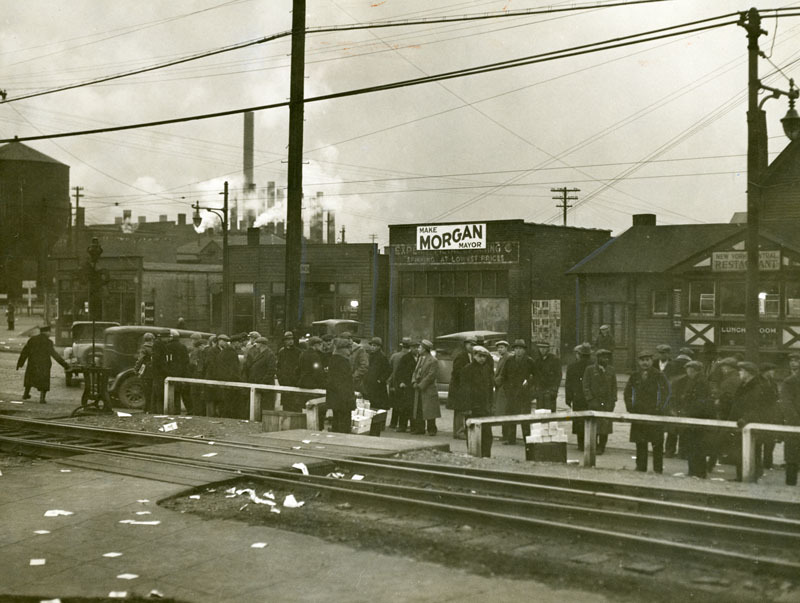Collinwood Railroad Yard Strike

On the afternoon of April 10, 1920, 500 workers at Cleveland's largest and busiest rail yard at the time - the Collinwood Railroad Yards and Diesel Terminal - left their work stations and staged a walk-out. The strike was a result of unresolved grievances against both the yardmen's local workplace and the Brotherhood of Railway Trainmen union. Collinwood laborers joined with their fellow Cleveland rail workers to form the Cleveland Yardmen's Association, mirrored on the "outlaw" Chicago Yardsmen Association. The new union vowed to stay away until their demands for wage increases were met. The fervor of the strike spread, prompting other temporary organizations to form in New York, Pittsburgh, St. Louis, and Kansas City.
The building of the Collinwood Rail Yards began in 1873 when the Lake Shore and Michigan Southern Railway chose Collinwood to be the location of new stockyards and railway shops. Collinwood began to grow both in population and in economic success due to its connection with numerous industrial cities and new job opportunities. It is not surprising, therefore, that the strike severely affected other industries, as well as the citizens of Cleveland and other striking regions. Dormant freight cars resulted in severe the food and fuel shortages in cities. Blast furnaces, steel mills, and other plants had to lay off men, and some factories were even reduced to permanently closing because coal and raw materials were no longer being transported.
The strike was short-lived for the Collinwood workers, many of them returning to work only a few days after their walkout. By the 21 April, only 35% of New York Central line employees were working. Collinwood's yard, on the other hand, had almost all of its men back, had even hired a few more men to make up for the still absent workers, and was running normally. Collinwood was the exception though. Most railroad workers from both Cleveland and other cities were determined to return to work only if Washington would recognize their new union and if their wage demands were met. The situation was severe enough that government aid was needed to supplement the food and fuel shortages. President Woodrow Wilson eventually became involved. The president appointed a Railroad Labor Board which negotiated with official unions and consented to wage increases that July. The strikes slowly dwindled as men returned to their jobs or were replaced, but the initial huge hit continued to cause problems in the areas where the strikes occurred.
Images







